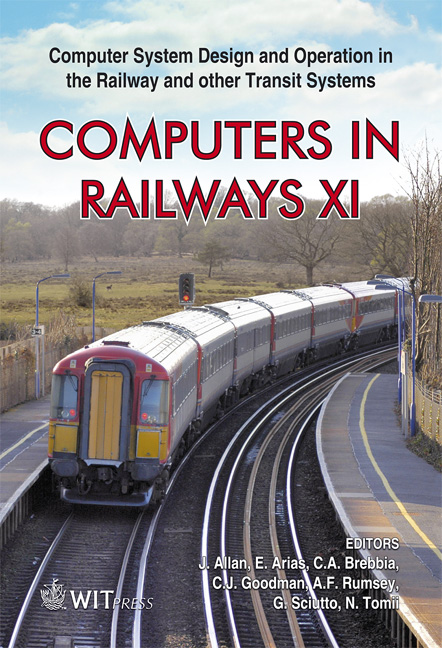Day-to-day Tuning Of The Tokaido Shinkansen Timetable – Carried Out For Every Single Operating Hour Throughout The Year
Price
Free (open access)
Transaction
Volume
103
Pages
10
Page Range
515 - 524
Published
2008
Size
1,980 kb
Paper DOI
10.2495/CR080501
Copyright
WIT Press
Author(s)
H. Ogawa, S. Kawai, Y. Kojima, M. Goto & H. Shoji
Abstract
This paper introduces key concepts used to formulate day-to-day scheduling of the Tokaido Shinkansen, the main transportation artery linking Japan’s principal metropolitan areas of Tokyo, Nagoya, and Osaka operated by the Central Japan Railway Company (JR-Central). In order to schedule train services so that passengers can always reserve a seat smoothly, we adjust the number of services for every single operating hour throughout the year, by adding extra services in addition to regular services to meet the demand of passengers, based on the detailed demand forecast. In addition, we analyze unsatisfied and potential needs by keeping a close eye on ticket sales information. For example, ticket sales progress is used to tell us whether the sales were quick or slow. Quick and good sales are an indication of strong potential needs. We add extra services promptly when the sales are faster than expected. If the Shinkansen is crowded with few seats available, it would be inconvenient and uncomfortable for passengers. Furthermore, even when there are travellers who would choose the Shinkansen if a ticket were available, we may lose the opportunity to serve them if there are no seats to sell. Therefore, we at JR-Central aim to respond to passenger needs, suppress congestion, and avoid fully-booked-up situations. As above, this paper focuses on the measures taken to avoid congestion and maintain efficient and smooth transport services for passengers. Minute and flexible tuning of timetables, along with scrupulous and expeditious scheduling approaches, is a feature of the Tokaido Shinkansen, the most densely scheduled high-speed railway in the world, operating up to 12 train runs per hour per direction and more than 370 train runs per day and serving approximately 410 thousand passengers a day. Keywords: Tokaido Shinkansen, timetable, scheduling, extra services, threshold level, stress index, sales progress curve, demand forecast.
Keywords
Tokaido Shinkansen, timetable, scheduling, extra services, threshold level, stress index, sales progress curve, demand forecast.





